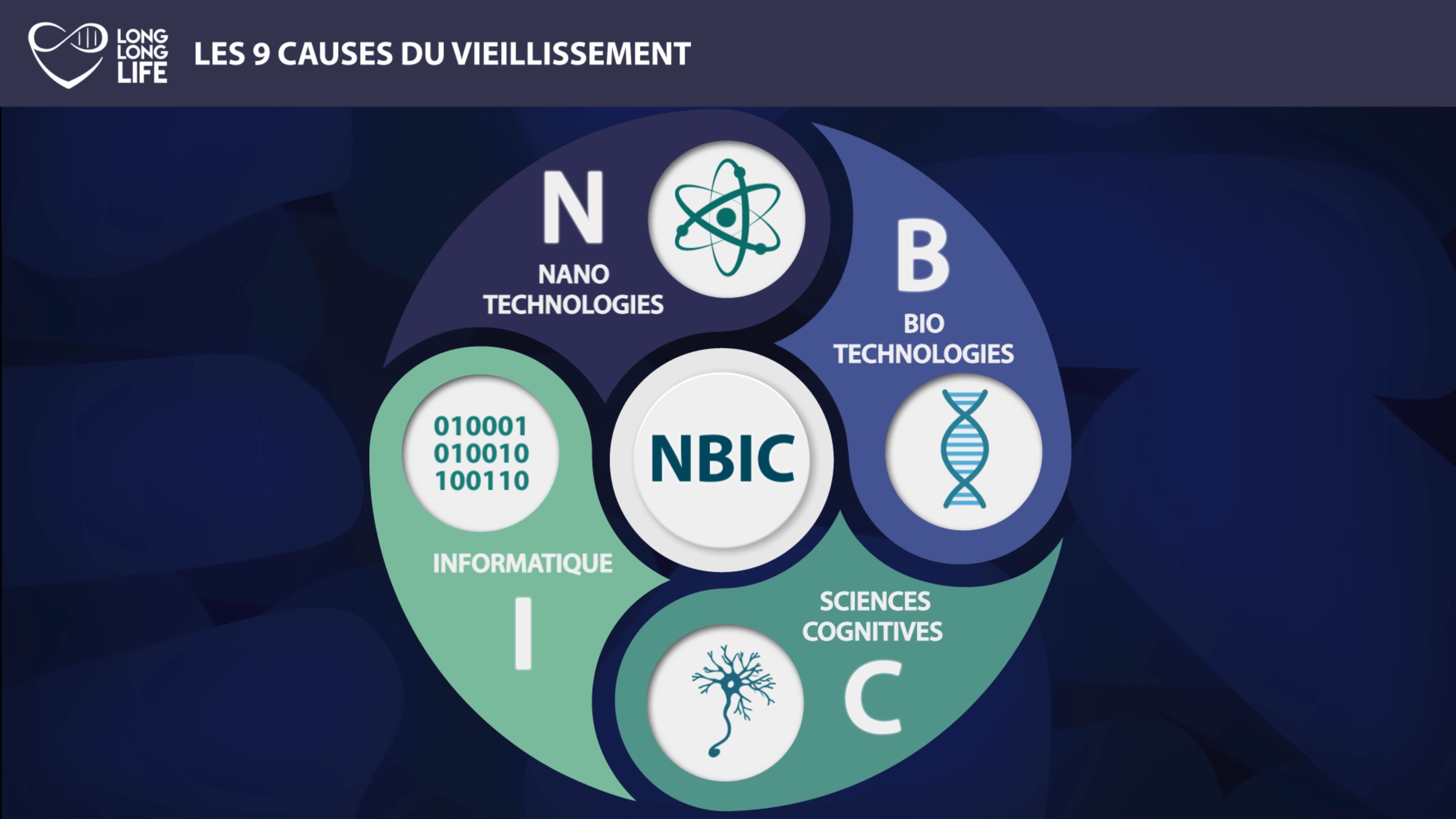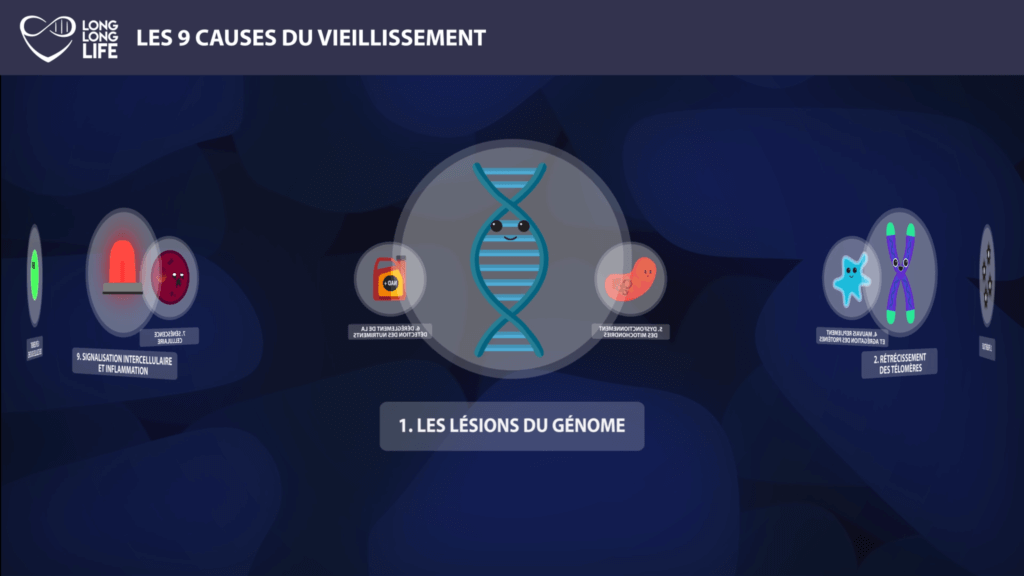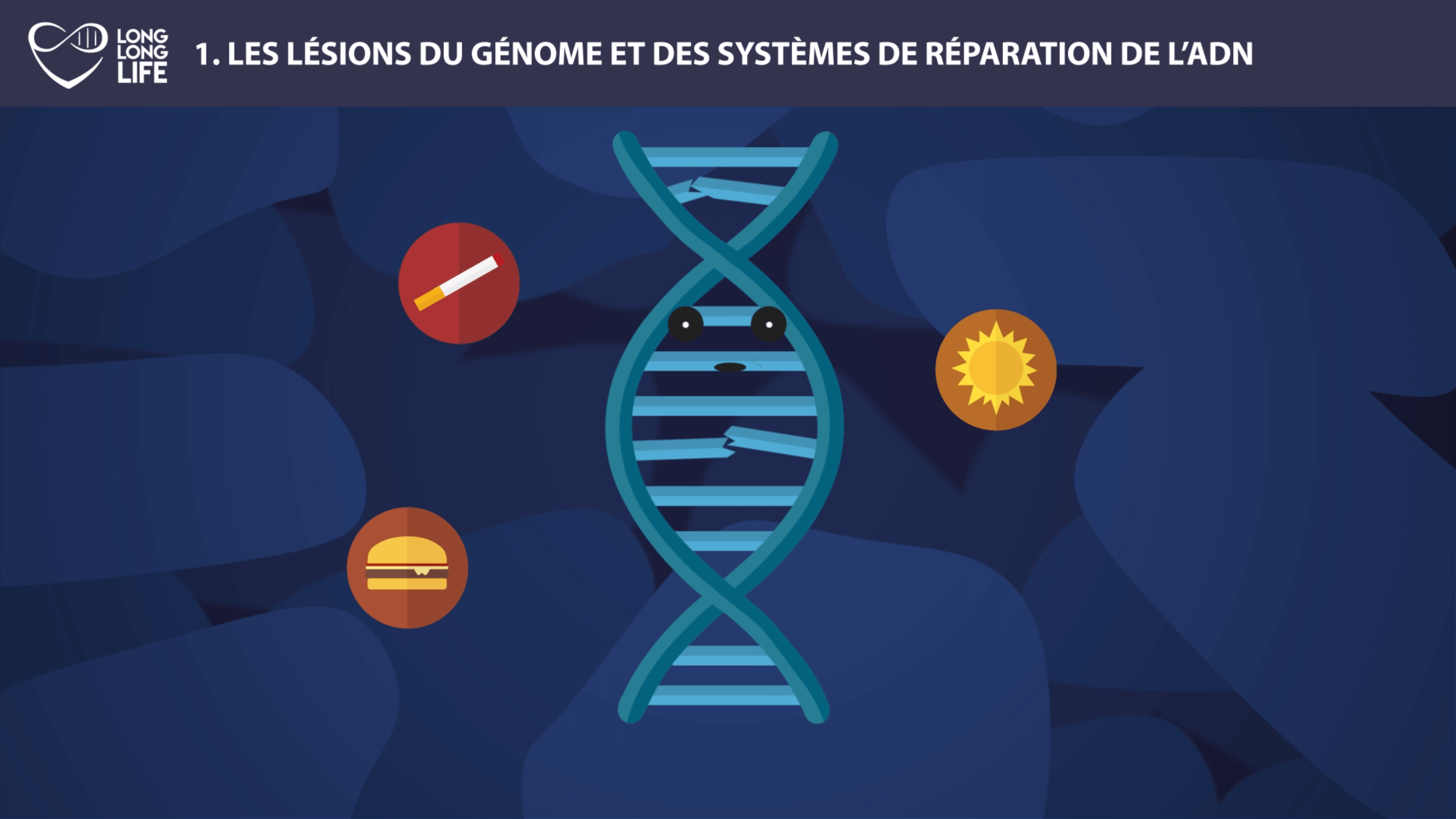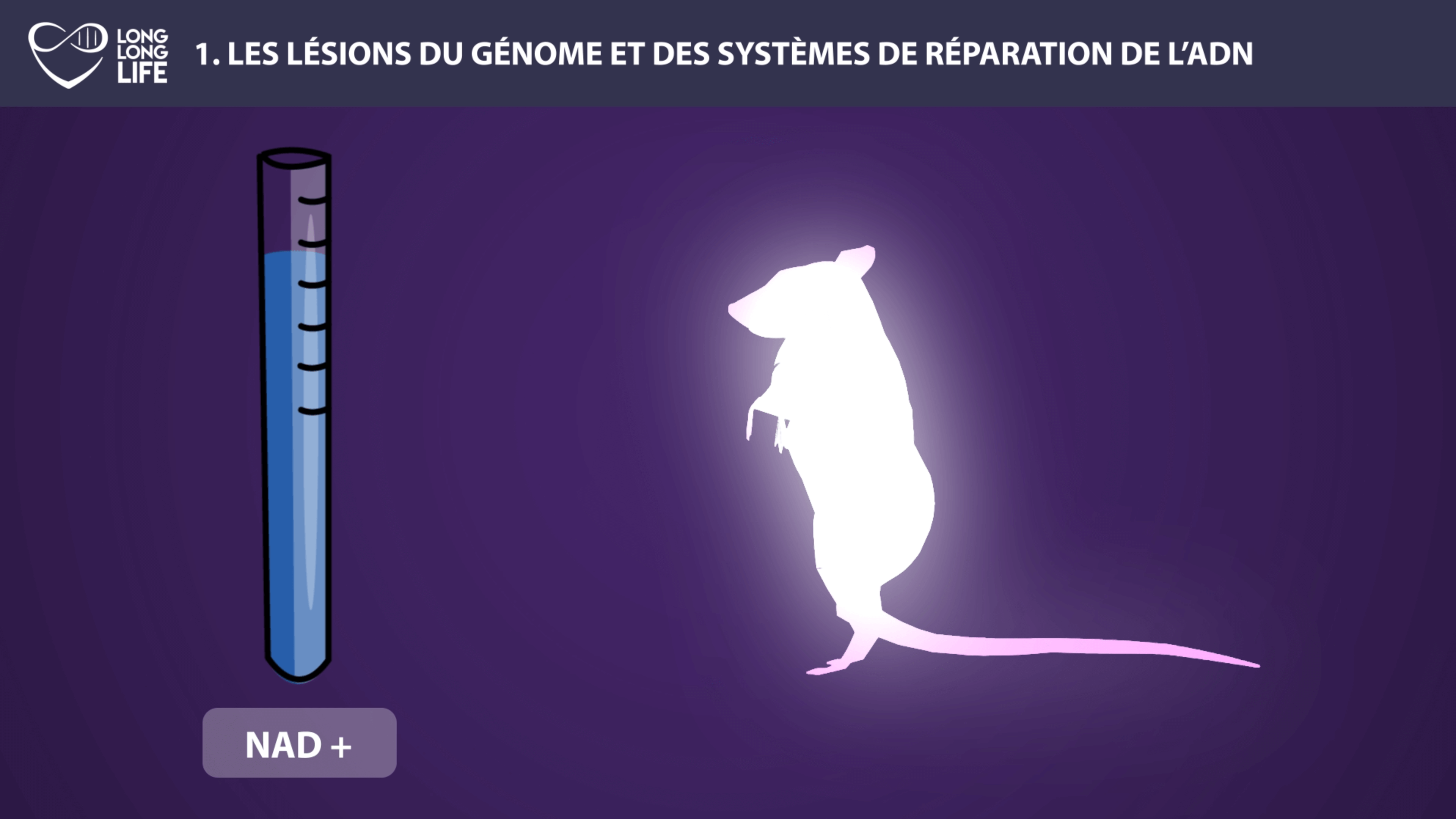Part 1: The causes of aging - DNA Degradation

In this series we will talk about the identified causes of aging. And if the subject interests you, we invite you to read the excellent review Hallmarks of Aging published in the journal Cell in 2013.
During this series, we will discover together the mechanisms put in place by your body during aging and which have an impact on your health and your life expectancy. We will also try to give you an overview of the state of scientific research concerning all treatments existing against aging.
So why this series on human aging?
Humanity is on the verge of an upheaval regarding aging. This transhumanist revolution is made possible by complementary scientific approaches grouped under the name NBIC, whose acronym stands for Nanotechnologies, Biotechnologies, Informatics and Cognitive Sciences. It is only by having access to quality information that everyone will be able to decide to take measures against their aging, with full knowledge of the facts and according to their own risk/benefit scales. And that's why we decided to make the state of research in this area accessible to everyone, with its share of good and bad news.

But what do we mean by cause? It is sometimes difficult to know what is a primary cause or a consequence of aging. Much research is being carried out to identify the most fundamental causes, because it is by directly treating the causes rather than the symptoms that humanity will be able to quickly overcome aging.

DNA Degradation – Definition
The first cause of aging that we will address is the damage suffered by our DNA over time. DNA is the information carrier that makes us what we are, the manufacturing program of our body. This information is made up of genes and all of the genes are grouped together under the name “genome”
This information is mainly stored in the nucleus of each of our cells. The genome contains all the information that allows our cells to make proteins, each having a specific role in making our body function. These proteins are synthesized using the data contained in each gene and there are between 25,000 and 30,000 genes. All of this information must be passed from one cell to another when they divide to create daughter cells. And for this, it is necessary to replicate the DNA in its entirety at each cell division.

Unfortunately, although very efficient, this replication system is not without errors. It has been noted that errors at the DNA level accumulate throughout life, as many factors threaten the stability of the genome. These factors are varied and can be external, such as cigarettes, the sun, diet... but also internal, such as replication errors: when your body has to copy the information contained in your DNA, it makes errors. These errors can either be repaired, or lead to the death of the cell, or, and this is the problem, be transmitted to daughter cells.
Fortunately, we have repair systems. Some genes make proteins responsible for repairing replication errors. That said, sometimes replication errors affect the genes that make these repair systems and, through a snowball effect, we see an exponential growth of problems within the cell. In mice and humans, it has been demonstrated that there is a causal link between an accumulation of DNA damage and aging.
In fact, when the cells in our body are made to divide a large number of times and they carry genetic mutations, this leads to a dysfunction of the cell which can cause problems at the level of the organ concerned.
DNA Degradation – Repair Systems
Interestingly, it has been shown that during aging, repair systems (like the PARP protein for short) become much more abundant in cells, suggesting that our body is aware of the dysregulations that come with aging. age and tries to take the necessary measures to fight against it. The activity of these repair systems is, however, dependent on co-enzymes, small molecules which enable their functioning. These are essential fuels for our cells whose concentration and recycling decrease with age. Among them, we often talk about NAD+ , because it is essential for repair mechanisms, but also for the health of the mitochondria, to which we will return later. When these molecules eventually become exhausted, our repair systems no longer function well, leading to serious disruptions, not only at the level of replication but also in other mechanisms, which can lead to the death of the cell.
The question then arises as to which, the chicken or the egg, came first. Do co-enzymes decrease because the replication systems are more numerous, or are these systems more numerous in an attempt to compensate for the lack of repair linked to the co-enzyme deficiency? Are these mechanisms causes or consequences of aging?
All we can say today is that there is a correlation between the stock of NAD+ (one of the co-enzymes) and aging.
DNA degradation – How to fight?
And here we touch on the difficulty of preventing aging. Supplementing with NAD+ is perhaps a good idea to boost our repair systems but it is also possible that cellular suicide linked to NAD+ depletion is a protection of the body against cells that have become too genetically ill and that it would be preferable to 'eliminate.
When the theory becomes too complicated, we do experiments.
Researchers therefore used mice, which were treated so that they kept a constant level of NAD+ throughout their lives. And, miraculously, not only did the treated mice live healthier, but they also lived longer than the untreated mice.
This shows that, in mice at least, taking NAD+ seems to be a good idea to fight against aging. For humans, as usual, this remains to be proven.

We close this chapter on DNA damage with this example, to help you understand the complexity that exists between understanding a mechanism, and drawing practical conclusions and safe treatment for those who want to live longer.
In summary, the first cause of aging discussed here is the damage suffered by DNA and which is perpetuated with each cell division. Over time, they accumulate and cause our cells to malfunction or die.
SOURCES:
Dr. Guilhem Velvé Casquillas on http://www.longlonglife.org/

